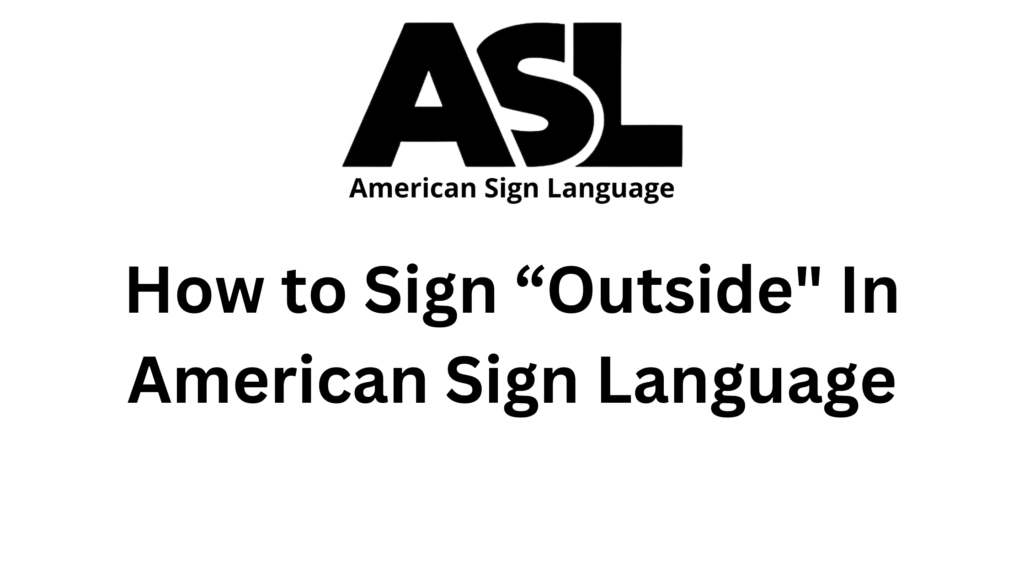Introduction to “OK” in ASL
Learning how to sign “OK” in American Sign Language (ASL) is a valuable skill. ASL is a complete, natural language that has the same linguistic properties as spoken languages, with grammar that differs from English. It is expressed by movements of the hands and face. Signing “OK” is a common gesture used in many everyday situations. This guide will help you learn and practice the sign for “OK,” along with variations and important cultural considerations.
Basic Handshape and Orientation of “OK”
The sign for “OK” in ASL starts with the basic handshape of the letter “O” and the letter “K.” This is known as the “O-K” handshape.
- Handshape:
- For the letter “O,” form a circle with your thumb and index finger touching.
- For the letter “K,” extend your middle finger and index finger while keeping your thumb touching the middle finger’s base.
- Orientation:
- The palm should face outward when signing “OK.”
- The fingers should be straight and together.
Step-by-Step Signing Instructions for “OK”
Here are the steps to sign “OK”:
- Start with your hand in the “O” shape.
- Move your hand to the “K” shape by extending your middle finger and index finger.
- Keep your thumb touching the middle finger.
- Ensure your palm is facing outward.
- Perform a small, quick movement forward to emphasize the sign.
Facial Expressions and Non-Manual Markers for “OK”
Facial expressions and non-manual markers (NMMs) are important in ASL. They can change the meaning of a sign. For “OK,” a nod or a small smile can add confirmation and positivity.
- Facial Expressions:
- A smile can indicate that everything is fine.
- A nod can emphasize agreement.
- Non-Manual Markers:
- Nodding your head while signing “OK” adds affirmation.
- Raising your eyebrows can indicate a question or seeking confirmation.
Common Variations and Regional Differences for “OK” in ASL
Like spoken languages, ASL has regional variations. The sign for “OK” can differ slightly depending on where you are in the United States.
- Variations:
- Some regions may sign “OK” by simply forming the “O” shape and then opening the hand.
- Others may use a more fluid motion from “O” to “K.”
- Regional Differences:
- In some areas, the sign might include more pronounced movements.
- Understanding local variations is useful, especially when communicating with signers from different regions.
Practicing and Politeness for “OK” in Sign Language
Practice is key to mastering any new skill, including signing “OK.” Regular practice will help you sign confidently and naturally.
- Practicing:
- Practice signing “OK” in front of a mirror to ensure your handshape and orientation are correct.
- Practice with friends or family members who know ASL or are learning it with you.
- Politeness:
- Using “OK” in a polite context can be done by adding a gentle smile.
- Be mindful of your facial expressions to ensure you are conveying the right message.
Using “OK” in Everyday Situations
Signing “OK” can be useful in many everyday situations. Here are some examples:
- At Home:
- Use “OK” to agree with family members.
- Confirm that tasks or chores are completed.
- At Work:
- Use “OK” in meetings to show understanding.
- Confirm tasks or project updates with colleagues.
- Social Settings:
- Use “OK” to agree with friends.
- Show that you are enjoying an activity or event.
Additional Signs for “OK”
There are other signs that can be used interchangeably with “OK” in ASL. These include:
- Fine:
- Sign “fine” by placing your thumb on your chest and extending your fingers outward, then moving your hand slightly away from your chest.
- Good:
- Sign “good” by placing your fingers on your lips and then moving your hand forward.
- Alright:
- Sign “alright” by holding your hand flat and moving it up and down slightly in front of your body.
Cultural Considerations of “OK” in ASL
Understanding the cultural context of ASL is important. Here are some considerations:
- Respect:
- Always be respectful when using ASL.
- Ensure you are signing correctly to avoid misunderstandings.
- Context:
- Be aware of the context in which you are using “OK.”
- Ensure your facial expressions match the message you are conveying.
- Learning:
- Continue learning about Deaf culture and the nuances of ASL.
- Engage with the Deaf community to enhance your understanding and skills.
Conclusion of “OK”
Learning to sign “OK” in ASL is a simple yet powerful way to communicate. By understanding the basic handshape, orientation, and facial expressions, you can effectively use this sign in various situations. Remember to practice regularly and be mindful of cultural considerations. With these tips, you’ll be able to sign “OK” confidently and accurately.
For more resources and to further your ASL learning, visit our homepage.



